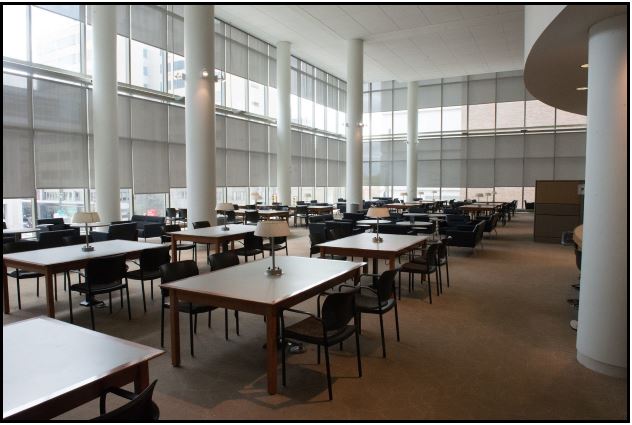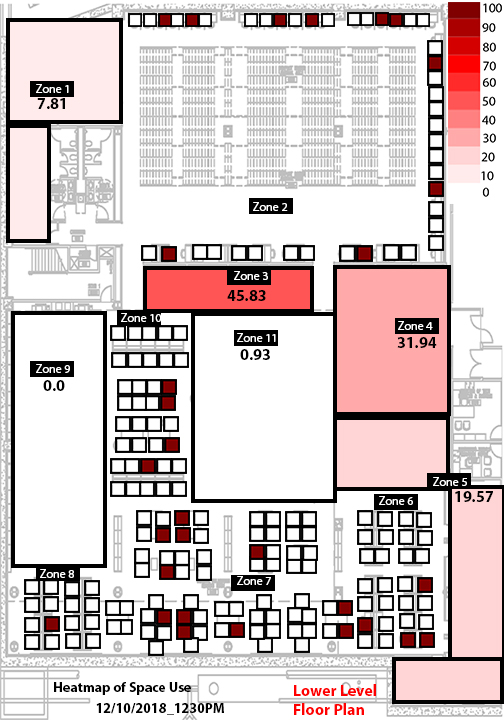The Ginsburg Health Sciences Library is celebrating its 10th birthday and used the occasion to conduct an intensive review of current operations and planning for the future. Barbara Kuchan, Director of the Health Sciences Libraries, worked with a team (Patrick Lyons, Jenny Pierce, Natalie Tagge and Will Dean) to plan the process. Since the review included a hefty mix of assessment activities, I was invited to participate as well.
In addition to looking at 10 years of activity statistics, the group decided on three assessment methods: focus groups, a whiteboard for user feedback, and space usage analysis with heat mapping.
Five focus groups were conducted with students, with faculty, and with staff. I asked them about how the library’s spaces, technologies and services support their work. What works well? What are the challenges? If you could wave a magic wand, what would your ideal library be like?
“Magic wand” questions can be a good way of getting at library qualities that are important to users. For instance, students described their dream library as high tech, but with “green” attributes – trees, a courtyard, and natural light. It has lots of bathrooms. It has secluded areas (nooks and crannies) but also an open feel. The temperature is not too cold or too hot. Having a Starbucks in the library would also be nice.
We gathered additional feedback in a very simple way: a large whiteboard was placed in the library’s lobby. Library staff queried in-person visitors about their use of the library, impressions of short-comings and strengths, and topics of general interest. This approach is lightweight (i.e. easily and cheaply done) and provides an opportunity for anonymous feedback.
Will Dean led an analysis of space usage, conducting regular audits of seating to determine the most popular areas for library work – a heat mapping exercise. Using the library’s floor plans, staff divided the library space into a series of zones. The staff then counted the number of individuals in those zones at various times of the day, during busy and quiet times of the year. A heat map of the data with the “hot spots” in red and not-so-hot spots in “blue” gives us a visual display of how popular certain areas are, and identifies not-so-popular areas.
In this example from the lower level, the tables by the windows (Zone 2) are popular, as expected for the natural light provided there. Unexpectedly, the carrels near the stacks (Zone 7) are about as popular, appealing to those requiring more secluded, private spaces for study.
What is most exciting about the report is not just the richness of the data collected, and the wide-sharing of the findings (at an all staff meeting and via email), but the many recommendations for changes to spaces and services that came about based on the assessments.
For instance, student needs for quiet space and interest in stress-reduction may result in a redesigned room as a “green study lounge.”
Staff interviews led to a recommendation for improved on-site IT support. This would allow Ginsburg to meet user requests in new ways, like the live streaming of workshops.
Assessing for the future is hard. How do you ask users what their future needs will be? How do you determine the best direction to take when users may not know what services the library can provide? The team addresses this dilemma in its conclusion:
Taking the time to assess current needs and plan for evolving ones is a worthwhile investment. Now that a health sciences library assessment team has been established, evaluation of programs and services will become part of continuing operations. For this benchmark assessment, work now focuses on prioritizing and implementing key recommendations.
For more information about the project, contact Barbara Kuchan at b.kuchan@temple.edu



